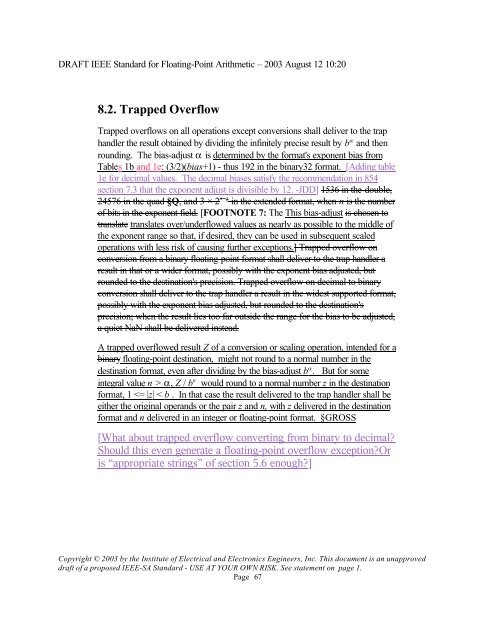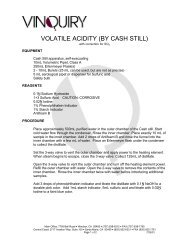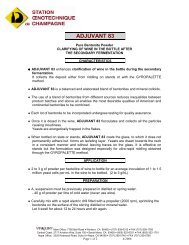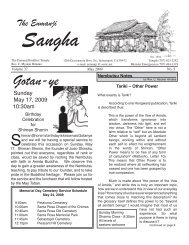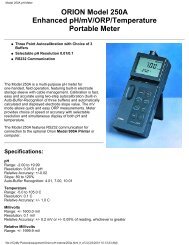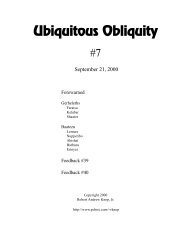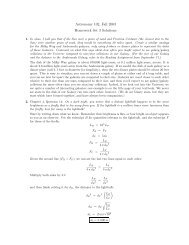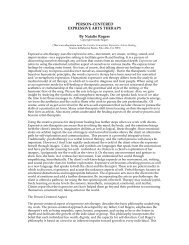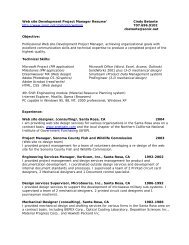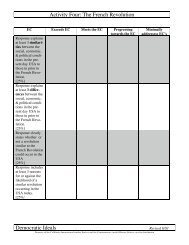DRAFT IEEE Standard for Binary Floating-Point Arithmetic - Sonic.net
DRAFT IEEE Standard for Binary Floating-Point Arithmetic - Sonic.net
DRAFT IEEE Standard for Binary Floating-Point Arithmetic - Sonic.net
You also want an ePaper? Increase the reach of your titles
YUMPU automatically turns print PDFs into web optimized ePapers that Google loves.
<strong>DRAFT</strong> <strong>IEEE</strong> <strong>Standard</strong> <strong>for</strong> <strong>Floating</strong>-<strong>Point</strong> <strong>Arithmetic</strong> – 2003 August 12 10:20<br />
8.2. Trapped Overflow<br />
Trapped overflows on all operations except conversions shall deliver to the trap<br />
handler the result obtained by dividing the infinitely precise result by b a and then<br />
rounding. The bias-adjust a is determined by the <strong>for</strong>mat's exponent bias from<br />
Table s 1b and 1e: (3/2)(bias+1) - thus 192 in the binary32 <strong>for</strong>mat. [Adding table<br />
1e <strong>for</strong> decimal values. The decimal biases satisfy the recommendation in 854<br />
section 7.3 that the exponent adjust is divisible by 12. -JDD] 1536 in the double,<br />
24576 in the quad §Q, and 3 × 2 n– 2<br />
in the extended <strong>for</strong>mat, when n is the number<br />
of bits in the exponent field. [FOOTNOTE 7: The This bias-adjust is chosen to<br />
translate translates over/underflowed values as nearly as possible to the middle of<br />
the exponent range so that, if desired, they can be used in subsequent scaled<br />
operations with less risk of causing further exceptions.] Trapped overflow on<br />
conversion from a binary floating-point <strong>for</strong>mat shall deliver to the trap handler a<br />
result in that or a wider <strong>for</strong>mat, possibly with the exponent bias adjusted, but<br />
rounded to the destination's precision. Trapped overflow on decimal to binary<br />
conversion shall deliver to the trap handler a result in the widest supported <strong>for</strong>mat,<br />
possibly with the exponent bias adjusted, but rounded to the destination's<br />
precision; when the result lies too far outside the range <strong>for</strong> the bias to be adjusted,<br />
a quiet NaN shall be delivered instead.<br />
A trapped overflowed result Z of a conversion or scaling operation, intended <strong>for</strong> a<br />
binary floating-point destination, might not round to a normal number in the<br />
destination <strong>for</strong>mat, even after dividing by the bias-adjust b a . But <strong>for</strong> some<br />
integral value n > α , Z / b n would round to a normal number z in the destination<br />
<strong>for</strong>mat, 1


